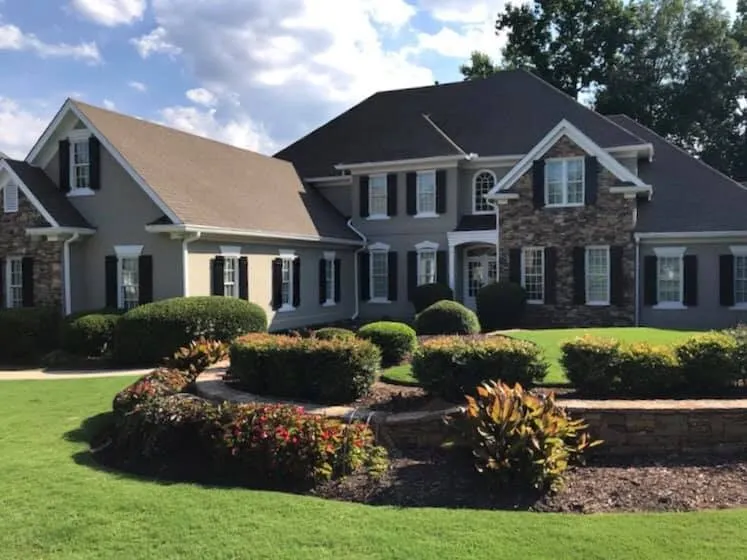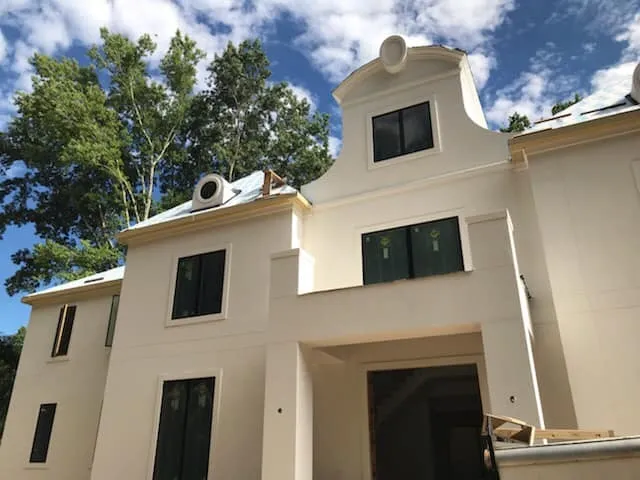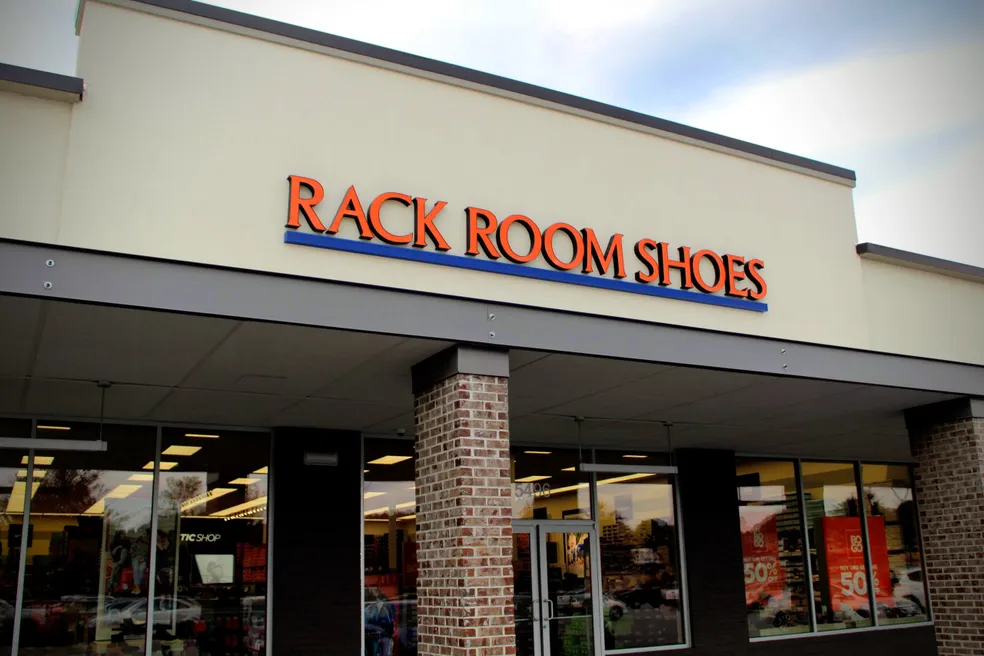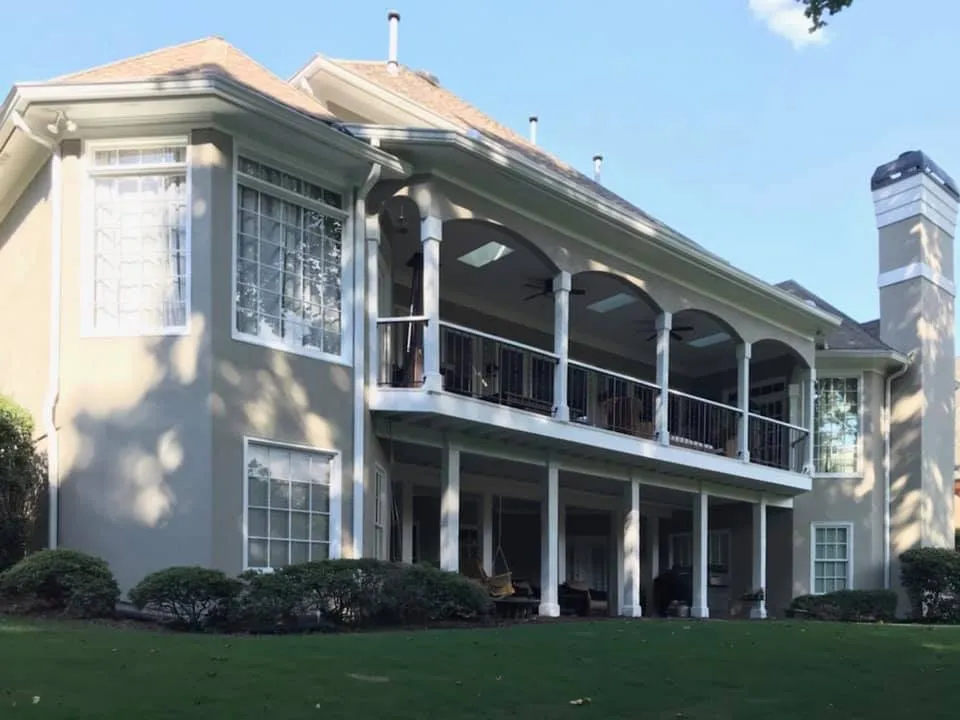Stucco Impact Repair
Advanced Stucco Repair offers specialized solutions for restoring the integrity and aesthetics of your business’s exterior walls, providing a durable and visually appealing finish that withstands the test of time.
Have a question before scheduling?
Expert Stucco Installation & Repair for Homes and Businesses in Georgia
Experience predictable project costs with transparent pricing – materials, labor, and cleanup included. Proudly serving Georgia for over 24 years.
- Clear, upfront pricing with no hidden fees or surprises
- Prompt, local service—flexible scheduling for both homeowners and builders.
- Expert stucco installation and repair for commercial and residential properties.
- Clean, professional work zones with respect for your property and timeline.
- Easy estimates and communication with a responsive local team.
- Quality craftsmanship that meets local codes and enhances long-term value.

Our Stucco Process: What to Expect From Start to Finish
Request Your Quote
Tell us about your project – residential or commercial – and we’ll provide a detailed, no-obligation estimate with clear timelines.
On-Site Evaluation
We inspect the property to assess existing surfaces, moisture control, and project scope to ensure accurate pricing and flawless results.
Material Selection & Preparation
We help you choose the right stucco type, texture, and color for your building, then prep the surface for proper adhesion and durability.
Expert Application
Our licensed team applies each layer with precision — from scratch coat to finish coat — ensuring consistency, strength, and visual appeal.
Curing & Quality Inspection
After application, we allow proper curing time and perform a full quality check to confirm color uniformity, adhesion, and finish integrity.
Cleanup & Final Walkthrough
We leave the site clean and conduct a final walkthrough with you to guarantee satisfaction before closing out the project.
Revitalizing Your Building with Stucco Impact Repair
At Advanced Stucco Repair, we specialize in addressing impact damage to stucco, offering comprehensive solutions to fix holes in stucco or mend cracks, ensuring your building’s exterior remains pristine. Our experts are adept at EIFS dent repair, restoring the original texture and color for a seamless finish. Contact us today to rejuvenate your building’s facade.
- We provide expert solutions for all types of stucco damage.
- Our team skillfully repairs holes and cracks in stucco, restoring its original appearance.
- We specialize in EIFS dent repair, ensuring a uniform look across your building’s exterior.
- Contact us now for professional and efficient Stucco Impact Repair services.


Choosing the Right Approach for Stucco Impact Repair
Whether you manage a retail complex, a residential property, or an office building, stucco impact damage can compromise your structure’s aesthetics and integrity. Advanced Stucco Repair helps navigate these challenges, providing expert guidance on timelines, budgets, and compliance requirements. We assist in choosing the right approach to fix holes in stucco or repair EIFS dents, ensuring a seamless restoration process.
- Advanced Stucco Repair provides expert advice on managing stucco repair projects within budget and timeline constraints.
- We help clients understand the extent of impact damage to stucco and recommend appropriate restoration methods.
- Our team assists in navigating compliance requirements related to stucco repair and EIFS dent repair.
- We guide you through the process of restoring your building’s exterior to its original aesthetic appeal with minimal disruption.
Reaping the Benefits of Professional Stucco Impact Repair
Engaging Advanced Stucco Repair for your stucco impact repair needs brings numerous practical advantages. Our meticulous approach ensures consistent quality, while our efficient processes minimize downtime, allowing you to continue your operations with minimal disruption. We also prioritize safety, adhering to industry standards in all our repair tasks.
- Our consistent quality control measures ensure a uniform and aesthetically pleasing finish for your building’s exterior.
- We minimize operational downtime through efficient stucco repair processes, reducing any inconvenience to your business or residents.
- Safety is paramount in our operations; we adhere strictly to industry standards while repairing impact damage on stucco surfaces.
- Through our expertise in EIFS dent repair and stucco crack fix, we help maintain the longevity and durability of your building’s facade.

Take Action for Your Stucco Impact Repair Needs
Don’t let stucco damage tarnish your building’s appeal. Reach out to Advanced Stucco Repair today for a personalized consultation and quote on our comprehensive stucco impact repair services.
Our dedicated team at Advanced Stucco Repair is at-the-ready to provide you with great customer service and first class Stucco Impact Repair. Reach out to us at (888) 592-1304 to discuss your Stucco Impact Repair needs today!

Digging Deeper into Stucco Impact Repair Techniques
At Advanced Stucco Repair, we utilize a systematic approach to address stucco impact damage. Our process begins with a thorough assessment of the damage, followed by meticulous preparation of the affected area. We then apply our specialized repair materials, taking care to match the existing texture and color. Our final step involves a careful inspection to ensure a flawless finish.
- Our initial assessment allows us to determine the extent of the stucco damage and devise an appropriate repair strategy.
- We meticulously prepare the damaged area for repair, ensuring optimal adhesion of our repair materials.
- Our team uses specialized materials designed for stucco repair, ensuring durability and aesthetic consistency.
- We strive for perfection in our repairs, conducting a final inspection to confirm a seamless finish.
- Our techniques are designed to restore your building’s exterior without disrupting your daily operations or compromising safety standards.
Investing in Stucco Impact Repair: A Cost Perspective
The cost of stucco impact repair is influenced by a variety of factors, including the extent of the damage, accessibility to the damaged area, risk levels associated with the repair, labor requirements, equipment used, and compliance with building regulations. Seasonal demand and market conditions can also affect pricing. At Advanced Stucco Repair, we provide quotes based on these specifics to ensure fair and accurate pricing for our services.
- The scope of damage significantly influences the cost of stucco repair services.
- Accessibility to the impacted area can affect labor time and subsequently, the overall cost.
- Compliance with building codes may necessitate additional procedures that could impact pricing.
- The type of equipment required for specific repairs like EIFS dent repair or fixing holes in stucco can influence costs.
- Market conditions and seasonal demand can also play a role in determining service costs.


Common Scenarios Necessitating Impact Damage Restoration
Commercial buildings often face stucco impact damage due to various reasons. For instance, a retail store might require Stucco Impact Repair after a delivery vehicle accidentally hits the exterior wall. Similarly, an office building could need repair services following a severe hailstorm that leaves the stucco facade dented and cracked.
- A shopping complex may need repair after accidental vehicular impact.
- An office building might require restoration post-hailstorm damage.
- A residential complex could seek repair services following vandalism.
- Construction mishaps at a commercial site may necessitate stucco repairs.
Our Procedural Approach to Stucco Impact Repair
Advanced Stucco Repair follows a structured process for stucco impact repair. We start with an on-site evaluation to assess the extent of damage and understand your specific needs. Based on this, we create a detailed plan that outlines the scope of work, safety measures, and scheduling windows. Our team then executes the repair work efficiently, adhering to all compliance standards.
- We conduct a thorough site evaluation to determine the extent of stucco impact damage.
- A detailed repair plan is created, outlining the scope of work and safety precautions.
- We schedule our operations strategically to minimize disruption to your business or residents.
- Our team executes the repair work, whether it’s fixing holes in stucco or EIFS dent repair.
- We adhere strictly to all compliance standards during execution and provide comprehensive documentation post-repair.

Testimonials From Our Customers
At Advanced Stucco Repair, we believe that every exterior matters. Home and business owners trust us for expert stucco installation, repairs, and maintenance—whether it’s a single-family residence or a commercial building. We focus on dependable service, clear communication, and results that last.

Frequently Asked Questions About Stucco Impact Repair
Here are some common queries we receive about our stucco impact repair services. We’ve provided brief, informative responses to help you understand our approach better.
What does the scope of stucco impact repair involve?
The scope of stucco impact repair can vary based on the extent of damage. It may range from fixing minor dents and cracks to restoring large areas affected by significant impact damage.
How long does it take to complete a stucco impact repair?
The duration of a stucco repair project depends on the severity of the damage and accessibility to the affected area. We strive to complete all repairs efficiently without compromising on quality or safety.
What access is required for performing stucco repairs?
We require safe and clear access to the damaged area for effective repairs. This might include removing obstructions or setting up scaffolding for higher sections of your building’s exterior.
How do you ensure safety and compliance during repairs?
We adhere strictly to industry standards and local building codes during all our operations. Safety measures are implemented at every stage, from site evaluation to execution, ensuring a risk-free environment.
How is scheduling and communication handled during the repair process?
We schedule our work in consultation with you, aiming for minimal disruption to your operations. Regular updates are provided throughout the project, keeping you informed about progress and any changes in timelines or costs.
